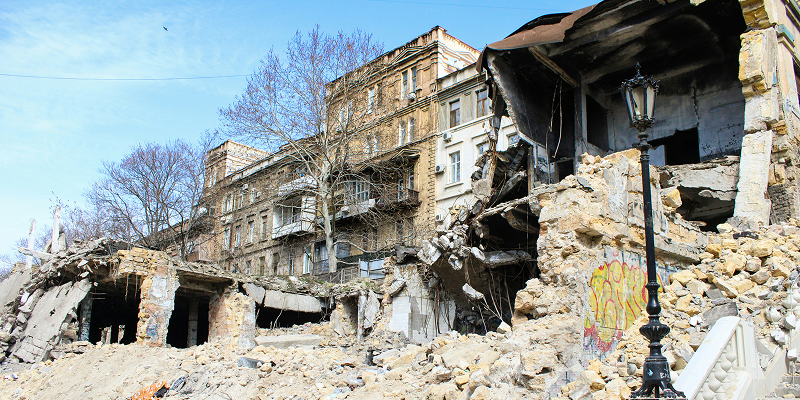A 7.7 magnitude earthquake struck Myanmar and parts of Thailand, shaking the region and the world into momentary awareness. In just a few minutes, over 2,000 lives were lost, more than 4,000 people were injured, and entire communities were left in ruins. Bridges collapsed. Roads split open. Hospitals struggled to cope. The scenes were devastating—but sadly, not unfamiliar.
We’ve seen it before. We’ve read the headlines, watched the aerial footage, and moved on. But perhaps what makes this quake different is not just its death toll or the destruction it left behind—but its location. Myanmar and Thailand are not distant, disconnected places. They’re part of our shared tectonic geography. And if the earth moved so violently there, it can—and will—move here too.
This isn’t fear-mongering. It’s how Geography and Nature works!
A Brutal Reminder of Earth’s Unforgiving Mechanics
Earthquakes are among the few natural disasters that strike without warning. While cyclones and floods give hours or days to prepare, earthquakes arrive unannounced and unleash devastation in seconds. The Myanmar quake occurred along the Sagaing Fault, a horizontal strike-slip fault that mirrors other well-known fault systems like California’s San Andreas. These types of faults store immense pressure over time and release it suddenly, causing the earth’s surface to shudder and ripple.
Such geological events are a feature of plate tectonics, and in that regard, South and Southeast Asia are stitched together by the same dangerous seams. The Indian tectonic plate, colliding with the Eurasian plate, forms the Himalayan belt—one of the most seismically active regions in the world. Every major quake in our extended region is not an isolated incident. It’s part of an interconnected system—a tremor in one corner that echoes into another.
But Are We Ready?
This is where the narrative must shift—from Myanmar’s tragedy to India’s terrifying vulnerability.
India is not on the sidelines of this story. In fact, geologists have long said that a massive earthquake, possibly magnitude 8 or higher, is overdue in the Himalayan region. The danger is not theoretical. It’s inevitable.
Roughly 59% of India’s landmass is vulnerable to seismic activity. Some of our most populated and economically critical cities—Delhi, Guwahati, Mumbai—are located in high-risk seismic zones. The Northeast faces the compounded risk of tectonic subduction. Even central India, once considered geologically stable, has had deadly intraplate earthquakes like the Latur quake in 1993. The reality is simple: there is no place in India where complacency is justified.
And yet, that is exactly where we stand.
Complacency Has Become the Norm
Despite decades of warnings and historical evidence, India remains dangerously unprepared for a large-scale seismic event. Our cities have grown faster than our safety standards can catch up. Skyscrapers are built in haste, housing societies sprout across fault lines, and heritage buildings are left to decay—none of them with earthquake resilience in mind.
We have building codes. They’re rarely enforced. We have zoning laws. They’re frequently bent or ignored. And when disaster strikes, we fall into a grimly familiar pattern: initial shock, temporary fixes, followed by the slow fade of urgency.
The 2001 Bhuj earthquake should have triggered a systemic rethink. It didn’t. The 1993 Latur quake should have taught us about intraplate vulnerability. It didn’t. The 2015 Nepal earthquake, which also affected northern India, showed us the dangers of poor building integrity. Still, not enough changed.
This isn’t due to a lack of knowledge. It’s a lack of consistent political and civic will.
The Consequences Go Beyond Human Lives
Earthquakes don’t just kill people—they crush economies. The Bhuj quake cost Gujarat around $10 billion. The Nepal quake, which barely touched Indian soil, caused $7 billion in damages here. With urban expansion and high-density construction accelerating, the financial risks are only growing.
Consider this: hospitals, schools, power grids, transportation hubs—none of these can afford downtime in a crisis. Yet most of them aren’t built to seismic safety standards. An earthquake during working hours could paralyze a city’s emergency response and healthcare system just when it’s needed most. Resilience is not just a moral imperative. It’s an economic one.
What Prepared Nations Teach Us
There are countries that faced similar dangers—and chose to transform. Japan, Chile, and New Zealand are global models of earthquake preparedness. Their buildings are designed to sway, not fall. Their children grow up learning how to respond when the ground shakes. Their governments invest in early warning systems, structural audits, and regular drills.
These are not luxuries of wealthy nations. They are the outcomes of political prioritization and public demand.
India, with its vast technical expertise and institutional capacity, can do the same—if it chooses to. And yet, the gap between knowing and doing remains vast.
So, What Needs to Change?
There is no silver bullet, but there is a clear roadmap.
- Enforce existing building codes and hold violators accountable.
- Retrofit critical infrastructure, especially hospitals, schools, and government buildings.
- Invest in training structural auditors and deploying them at the city and district level.
- Run public safety drills in schools, offices, and housing societies—regularly.
- Reclaim open spaces in cities for evacuation zones, resisting overdevelopment.
- Make earthquake awareness part of civic education, not just disaster management courses.
Most of these don’t require new laws or expensive new tech. They require sustained focus and execution.
This Is a Shared Responsibility
It’s tempting to put this all on the government. But preparedness isn’t top-down. It’s a collective effort.
Builders, architects, urban planners, academic institutions, media houses, civil society organizations, and yes—citizens—must all share the burden. We need to demand accountability and compliance. We need to ask better questions before we buy a home. We need to prepare ourselves and our families. Because when the earthquake comes, it’s too late to start learning.
Act Before the Shaking Starts
The Myanmar earthquake was not just a regional tragedy. It was a mirror held up to all of us—especially those of us in India living in fragile cities built on shaky ground.
We cannot stop tectonic plates from moving. But we can choose not to be surprised by it.
Preparedness is a choice. Ignoring the warnings is a choice too. One of them saves lives. The other writes headlines no one wants to read.
So ask yourself—and ask your city: When the next quake strikes, will we be caught unaware again? Or will we finally be ready?

